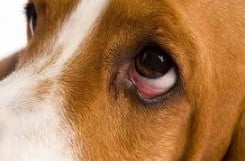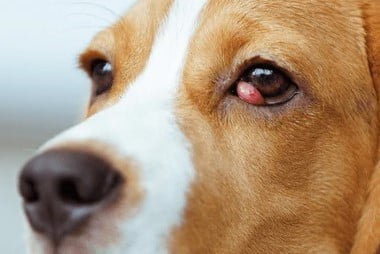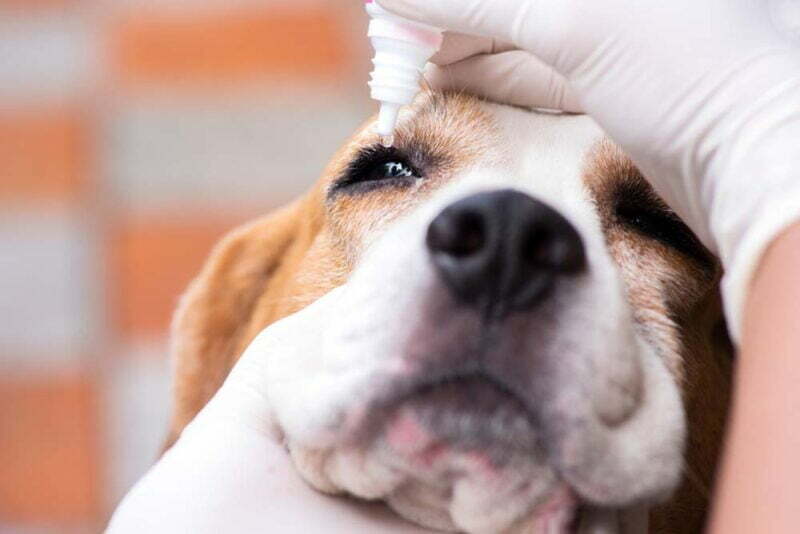Beagles are beloved companions known for their friendly nature and expressive eyes. However, like all dogs, beagles can experience certain eye problems that require attention and care. Understanding these issues is crucial for maintaining your beagle’s eye health and ensuring their overall well-being. In this article, we will explore common beagle eye problems, their causes, symptoms, and provide practical tips for managing and preventing these issues.
Common Beagle Eye Problems
Beagle eye problems can range from mild irritations to more serious conditions that require veterinary intervention. By familiarizing yourself with these common issues, you can provide timely care and support for your beagle’s eyes.
# 1. Conjunctivitis (Pink Eye)

Conjunctivitis, also known as pink eye, is a common eye problem in beagles. It can be caused by bacterial or viral infections, irritants, or allergies. The conjunctiva, the thin membrane covering the front of the eye, becomes inflamed, resulting in symptoms such as redness, swelling, discharge, excessive blinking, and squinting.
To manage conjunctivitis, it’s essential to seek veterinary diagnosis and treatment. Your veterinarian may prescribe eye drops or ointments to alleviate inflammation and combat the underlying infection. Regular cleaning of the affected area can also help prevent further irritation. Additionally, identifying and avoiding potential irritants or allergens can aid in managing conjunctivitis in your beagle.
# 2. Cherry Eye (Protrusion of the Third Eyelid Gland)

Cherry eye is a condition characterized by the protrusion of the third eyelid gland. It occurs due to weak connective tissue or genetic predisposition. This condition presents as a red, swollen mass in the corner of the eye, causing discomfort to your beagle.
If you notice cherry eye in your beagle, it is crucial to consult your veterinarian. Surgical correction is often necessary to reposition the gland and secure it in place. Post-operative care, including medication and regular eye check-ups, is essential to ensure proper healing and prevent recurrence.
# 3. Corneal Ulcers
Corneal ulcers are open sores or scratches on the cornea, the clear outer layer of the eye. They can occur due to scratches, foreign objects, infections, or trauma. Beagles with corneal ulcers may exhibit symptoms such as redness, excessive tearing, squinting, and sensitivity to light.
When dealing with corneal ulcers, prompt veterinary examination is crucial. Treatment may involve medication in the form of eye drops or ointments to prevent infection and promote healing. Protection of the eye, such as using an Elizabethan collar to prevent rubbing or scratching, is essential to prevent further injury.
# 4. Glaucoma
Glaucoma is a serious eye condition that can lead to vision loss if left untreated. It occurs when there is increased pressure in the eye, damaging the optic nerve. While glaucoma can affect any dog breed, beagles may be genetically predisposed to this condition.
If you suspect glaucoma in your beagle, it is vital to seek veterinary diagnosis and intervention. Treatment options may include medication to reduce eye pressure, surgical interventions, or a combination of both. Regular monitoring and follow-up visits with your veterinarian are necessary to assess the effectiveness of treatment and manage the condition effectively.
Preventive Measures for Beagle Eye Health
Taking preventive measures can significantly contribute to your beagle’s eye health and reduce the risk of developing eye problems. Here are some essential steps to consider:
# 1. Regular Veterinary Check-ups
Routine eye examinations by a veterinarian are vital for identifying any early signs of potential eye problems. During these check-ups, the veterinarian will assess your beagle’s eye health, look for any abnormalities, and provide professional advice on preventive measures specific to your dog.
# 2. Proper Hygiene and Cleaning
Maintaining proper hygiene and regularly cleaning your beagle’s eyes can help prevent infections and irritations. Use veterinarian-approved eye cleansers or wipes to gently clean the eye area. Avoid using harsh products or excessive rubbing, as this can further irritate the eyes.
# 3. Protecting Beagle’s Eyes
Beagles love exploring the outdoors, but certain environments can pose risks to their eyes. Avoid exposing your beagle to irritants or chemicals that may cause eye irritation. Consider using protective eyewear, such as dog goggles or sunglasses, when engaging in activities that may expose the eyes to debris, dust, or strong sunlight.
# 4. Balanced Diet and Nutrition
A well-balanced diet plays a crucial role in maintaining overall health, including eye health. Certain nutrients are beneficial for the eyes, such as vitamins A, C, and E, as well as omega-3 fatty acids. Consult with your veterinarian to ensure your beagle’s diet includes appropriate nutrients for optimal eye health.
When to Seek Veterinary Assistance for Beagle Eye Problems
While preventive measures are important, it’s equally vital to recognize when professional veterinary assistance is needed. Pay attention to any signs of discomfort or abnormalities in your beagle’s eyes, such as redness, swelling, discharge, excessive tearing, squinting, or changes in vision. Other indicators may include behavioral changes or persistent symptoms despite home care.
If you notice any of these signs or have concerns about your beagle’s eye health, it’s crucial to seek prompt veterinary assistance. Your veterinarian will perform a thorough examination, diagnose the issue, and provide appropriate treatment options to alleviate your beagle’s discomfort and maintain their eye health.
Conclusion
Being aware of common beagle eye problems, their causes, symptoms, and preventive measures is vital for ensuring your beagle’s eye health and overall quality of life. By staying vigilant, practicing proper hygiene, and seeking veterinary assistance when necessary, you can protect your beagle’s eyes and minimize the risk of serious eye issues.
Remember to schedule regular veterinary check-ups to monitor your beagle’s eye health, maintain proper hygiene and cleaning practices, protect their eyes in certain environments, and provide a balanced diet rich in essential nutrients. By implementing these preventive measures and recognizing the signs that warrant professional assistance, you can help keep your beagle’s eyes healthy and ensure they enjoy a lifetime of clear vision and joyful experiences.
By prioritizing your beagle’s eye health and taking proactive measures, you can contribute to their overall well-being and strengthen the bond you share with your furry companion.

